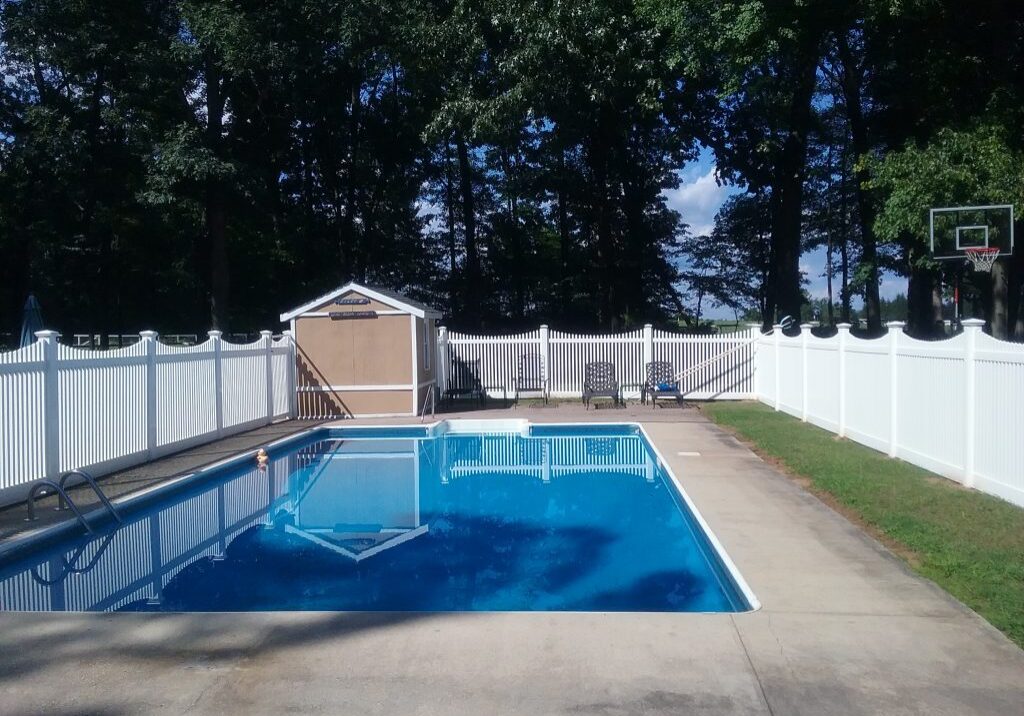All Categories
Featured

When thinking about setting up a fencing on your residential property, one of one of the most vital steps is to recognize whether you need a license. Fence installments frequently call for a license to ensure that the framework abides by regional zoning legislations, building codes, and security standards. The specific permits required can vary relying on your place, the kind of fence you prepare to mount, and the elevation or positioning of the fence. Below's a guide to aid you navigate the process of obtaining a fencing authorization and ensure that your installment is lawful and problem-free.
Why You Required a Permit for a Fencing Installation. A fence license is necessary to make certain that the installation satisfies local guidelines. The authorization procedure helps local authorities confirm that your fence does not interfere with web traffic presence, regard your property lines, or violate elevation constraints. It additionally guarantees the security of the framework, so it does not position a hazard to you, your neighbors, or the public. Mounting a fence without an authorization can lead to fines, elimination of the fence, or delays in building, so it's vital to examine whether a license is called for prior to starting your task.
Kinds Of Licenses You May Need. There are a few common kinds of authorizations you could need for a fencing installment:
Building License. A structure authorization is the most usual license needed for fence installations. This permit makes sure that the fence fulfills safety and security requirements and is built according to local structure codes. A structure license is usually required if the fencing goes beyond a particular elevation (typically 6 feet), is made from particular products, or is located near a public pathway or road.
Zoning License. A zoning authorization might be called for to verify that your fence follows local zoning regulations. Zoning guidelines can determine where a fencing can be positioned on your residential property, just how high it can be, and whether it is allowed certain areas (such as along building lines or ahead backyards) Some districts have laws limiting the elevation of fencings in the front backyard to ensure visibility for pedestrians and chauffeurs.

Setback Authorization. You may require a problem license if you are constructing a fencing near your residential or commercial property line or close to a street. A setback refers to the distance a structure, including fences, have to be from the property line. Trouble regulations vary by place, and making sure that your fencing is placed correctly can stop problems with next-door neighbors and stay clear of infractions.
House Owner Organization (HOA) Authorization. If you stay in a community regulated by a House owner's Association (HOA), you might require approval from them along with regional permits. HOA guidelines commonly cover the sort of products, height, style, and color of fencings. Also if your city government does not require a license, your HOA may still have specific standards that require to be complied with.
How to Look For a Fencing Permit. To request a fence permit, you'll need to call your regional structure department or preparation workplace. The application process typically involves submitting a kind, paying a cost, and sending a website plan of your property that shows the recommended area of the fence. You may likewise require to include information regarding the materials, elevation, and layout of the fencing.
Sometimes, a neighborhood official may require to examine your residential or commercial property prior to approving the permit. As soon as the authorization is provided, you will be licensed to proceed with your fencing setup.
When Is a Permit Not Required? In particular scenarios, an authorization might not be called for. These scenarios can include:
Low Height Fences: In many locations, fences that are below a certain elevation (often 3 to 4 feet) might not need an authorization, particularly if they are positioned in the backyard or various other non-visible areas.
Fence Replacement: If you're replacing an existing fence with the very same elevation and material, some locations may not call for a new license.
Non-Obtrusive Fencings: Attractive or temporary fencings, such as those made use of for gardening or landscape design objectives, may not call for licenses as long as they are not irreversible and reduced.
Nevertheless, it is very important to consult your regional zoning office or building department, as policies can differ by territory.
Effects of Not Getting an Authorization. Falling short to acquire the necessary licenses can bring about considerable effects. These consist of penalties, required elimination of the fencing, or even delays in construction. Additionally, if your fence does not meet neighborhood guidelines, you can deal with lawful problems with neighbors or neighborhood authorities.

Conclusion. By making sure that you comply with regional laws and obtain the required authorizations, you can guarantee and avoid costly mistakes that your fence is legally compliant. Examine with your local building division, HOA, and zoning office to identify what authorizations are needed for your details fencing project.
Latest Posts
Join WyHy FCU – Exclusive Benefits for Your Financial Success
Published May 22, 25
1 min read
Join WyHy FCU – Top Benefits for Your Financial Future
Published May 21, 25
1 min read
Discover Cost-Effective Auto Repairs with Montclare’s Monthly Service Specials
Published May 20, 25
1 min read